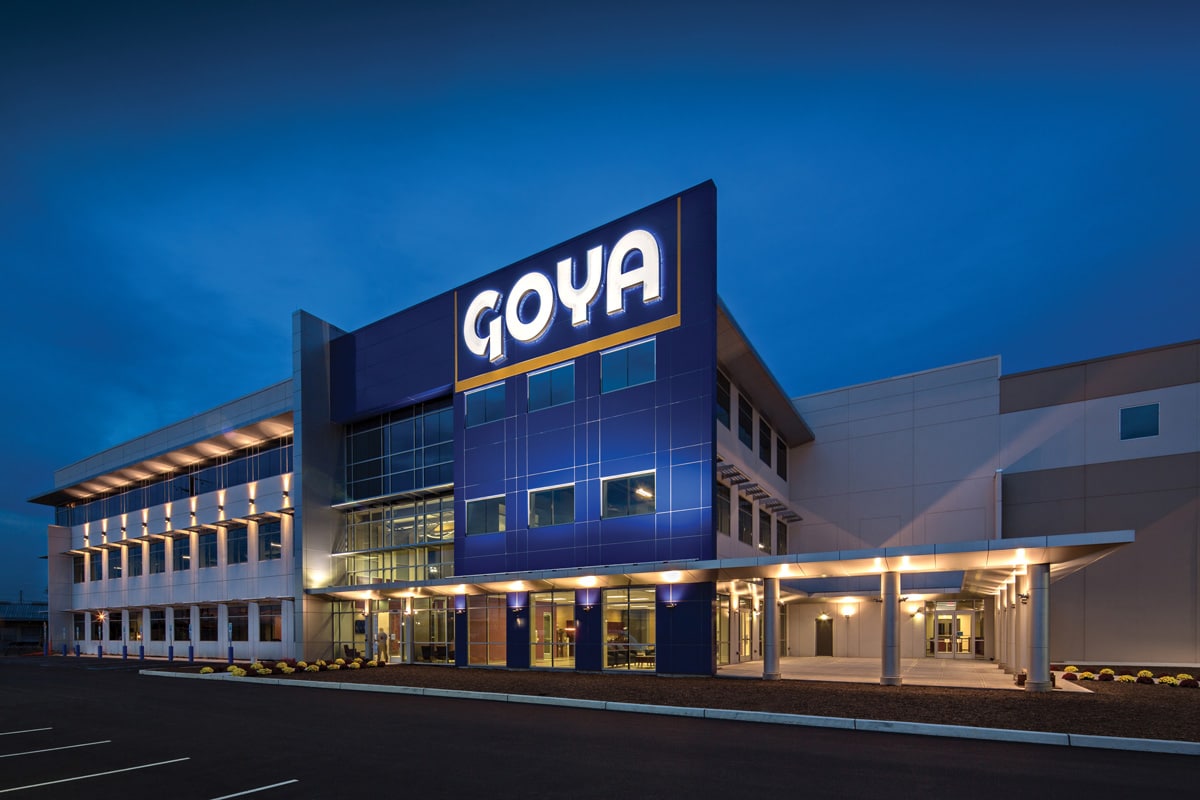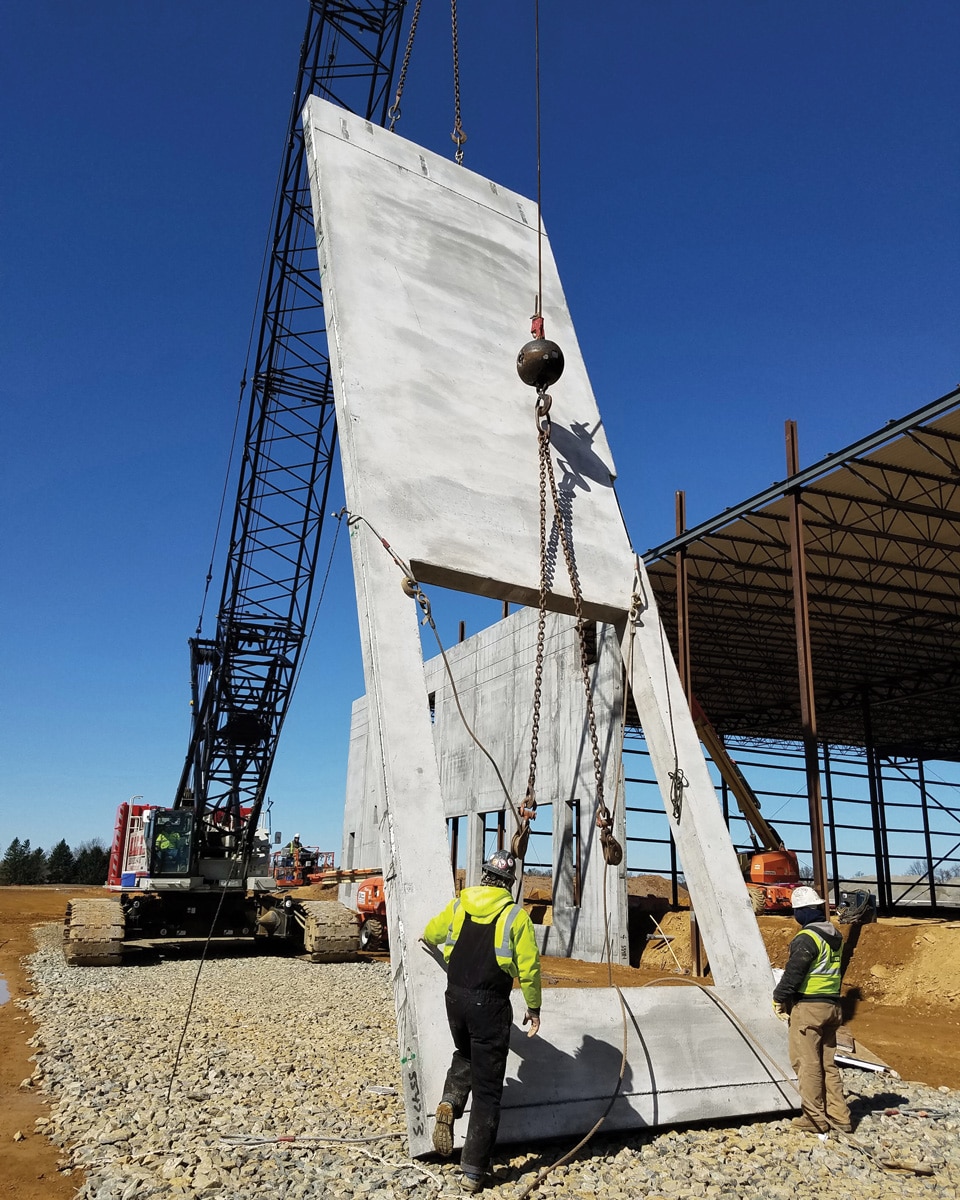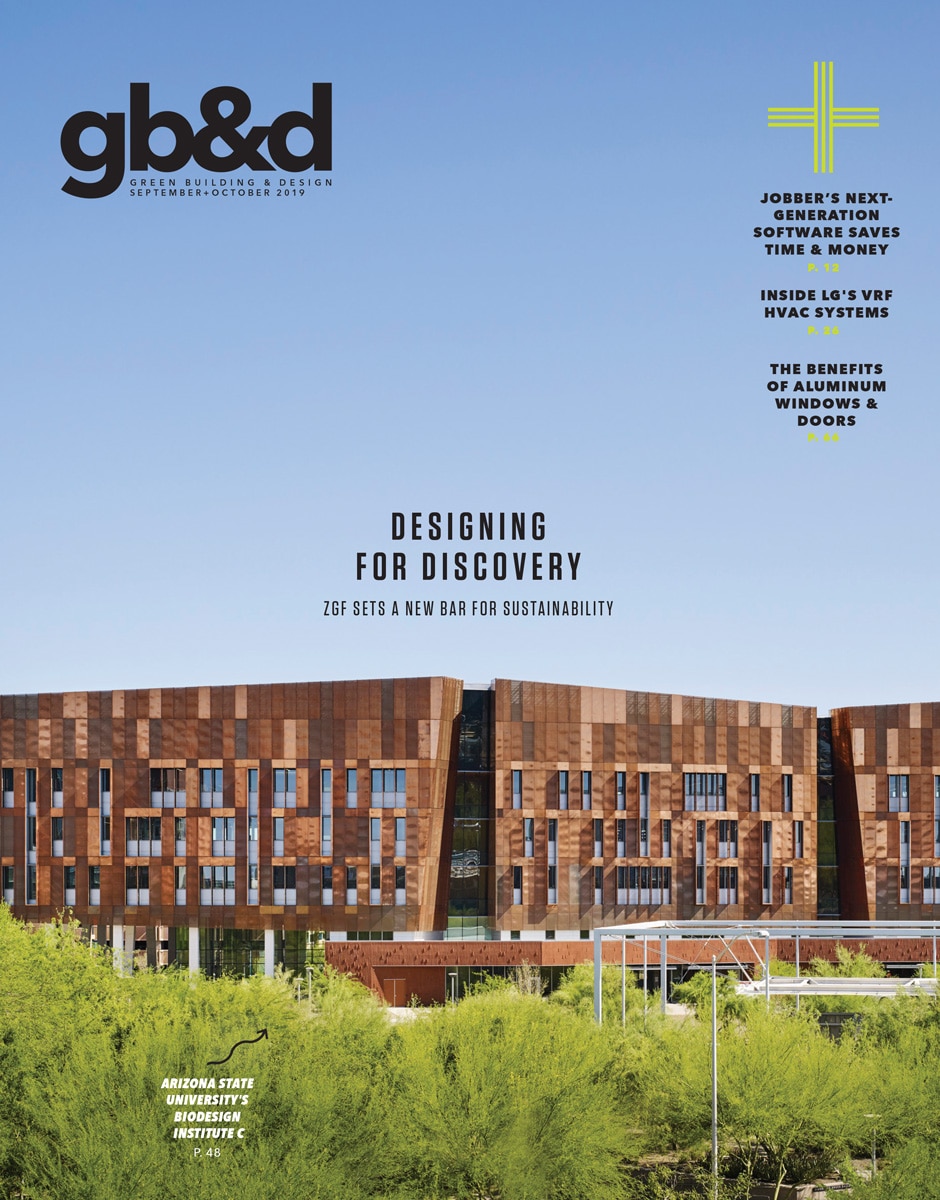
[Photo: Courtesy of Fabcon]
For nearly 50 years, Fabcon—the largest structural precast wall manufacturer in the U.S.—has been making building projects more efficient. Fabcon’s panels are capable of meeting all R-Value requirements, regardless of climate. All of the elements in Fabcon’s products work together to provide a high level of insulation. While regular concrete usually has a thermal resistance rating of about 0.11 per inch of thickness, Fabcon’s concrete provides double the resistance—0.22 per inch of thickness. Fabcon Regional Sales Manager Dave Stanton recently walked us through why this matters.
Fabcon offers a wide range of R-values. We’ve built from Canada to Florida, in different climates and building types, from office buildings to food storage—where they need an extremely high R-value. We have everything from our minimum R-value of 13.6 all the way to over 28. To have an R-28 wall panel, or a fully integrated insulation wall system from interior of the wall to exterior—there’s nothing comparable. To get that R-value, you usually have to have multiple layers of building material and added insulation. We don’t need to do that because our 12-inch thick VersaCore+Green Sandwich panel has in some areas 7 inches of insulation.

[Photo: Courtesy of Fabcon]
With our Sandwich panel, you have continuous insulation from edge to edge. We recognize the demand for continuous insulation and, as energy codes get more stringent, we’re rolling out a new product—VersaCore Edge. It’s a thinner continuous insulation precast panel. It’s 8 inches thick. We’re prepared to build in any state across the country efficiently. The VersaCore+Green Sandwich panel is one of our premium products. It often won’t work in budgets because it’s expensive, but we now offer a less expensive, higher value continuous insulation panel. If there’s a requirement to have continuous insulation, you don’t need to go all the way to an R-28. You can get a thinner, more cost effective, higher value panel for that individual budget. We recently used the Edge panel to expand our Kansas facility and the R-value is in that 16 range.
Research shows that if a building owner is willing to invest upfront, the return comes quickly. In most cases, it’s two to five years. If you’re building a building, especially if an end-user is going to be there for 30 or more years, it’s a no-brainer. You’re investing in your company when you build a building that’s green.


